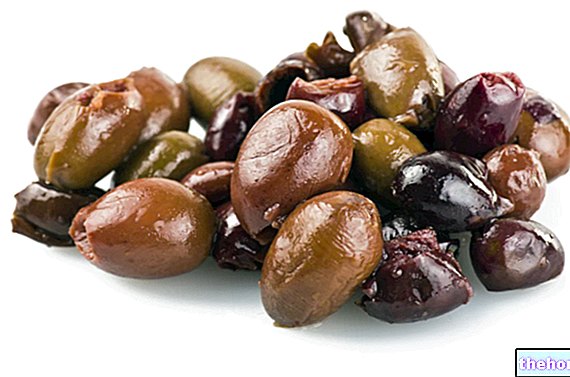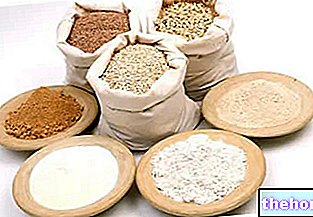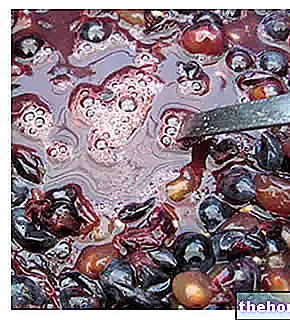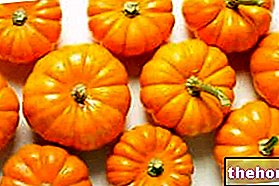Pasta food - legislature
Pasta is a typical Italian food and meets the characteristics and requirements described in the first commodity legislature of 4 July 1967, n. 580,

Terminology and classification of pasta
Pasta can be classified on the basis of ingredients, degree of humidity, shape, surface and roughness.
Classification of pasta based on ingredients:
- Durum wheat semolina or semolina pasta: durum wheat semolina pasta, as well as durum wheat semolina pasta, is a food obtained from the DRAWING or LAMINATION and DRYING of dough based on: durum wheat semolina and water, or durum wheat semolina and water, without adding other ingredients or replacing those indicated.
- Special food pasta: special pasta is the type of pasta that, in addition to containing water and durum wheat semolina or semolina, uses the addition of other ingredients; this must be marketed with the wording "semolina / wheat semolina pasta hard "and hereinafter the ingredient (s) used.
- Egg pasta: egg pasta is a product obtained from the processing of the dough based on semolina flour and at least 4 whole hen's eggs without shell (or the equivalent in ovo-liquid product), with an egg / flour ratio of 1 / 5 (eg: 200g of egg without shell - or the equivalent in liquid ovo-product - per 1000g of durum wheat semolina flour). Egg pasta is therefore a type of special pasta that meets further requirements and MUST be marketed under the heading of "egg pasta".
The characteristics of the egg pasta are:
- Maximum humidity ≤ 12.5%
- Total ash ≤ 1.1% dry matter
- For doughs with more than 4 eggs per 1000g of flour: + 0.05% of dry matter for each egg or corresponding in liquid ovo-product
- Total protein ≥ 12.5% dry matter
- Acidity ≤ 5 ° on 100 parts of dry matter
- Ether and sterol extract ≥ 2.8 dry matter
- Sterolic extract ≥ 0.145 of dry matter
NB: In the production of special pasta and / or egg pasta, the reuse of the food processing / packaging cuts is allowed.
Classification of pasta based on the degree of humidity:
Food dry pasta: dry pasta covers ¾ of the total demand for pasta; it is obtained by drawing or rolling and DRYING a mixture prepared with durum wheat semolina or semolina and water. The definition of dry food pasta is comparable to that of durum wheat semolina or semolina pasta placed in the previous classification.
Fresh food pasta: fresh pasta covers ¼ of the total demand for pasta; it is obtained by rolling doughs which may include the "use of soft wheat flour (≤3%) and which boast a higher degree of HUMIDITY" and acidity.
How to make homemade fresh pasta
A good fresh homemade pasta is the basic preparation for many first courses, such as fresh pasta with crumbs, light pie with radicchio or that with asparagus, shrimp and ricotta. In this Video Recipe our Personal Cooker Alice explains in detail how to prepare three different types of fresh egg pasta: the classic one, the green one with spinach and the squid ink one.
Fresh homemade pasta - yellow pasta, green pasta and black pasta - how to prepare it and how to cook it
Problems with playing the video? Reload the video from youtube.
- Go to the Video Page
- Go to the Video Recipes Section
- Watch the video on youtube
Pasta produced in other countries (otherwise regulated) and marketed in Italy, which contains soft wheat flours, MUST bear a particular denomination:
- Soft wheat flour pasta: exclusive presence of soft wheat flour
- Pasta of durum wheat semolina and soft wheat flour: mixing of the two ingredients with a prevalence of durum wheat semolina
- Pasta made with soft wheat flour and durum wheat semolina: mixing of the two ingredients with a prevalence of soft wheat flour.
Classification of pasta based on the shape:
They are pasta prepared industrially, by hand or traditionally in the family, and are divided according to the shape by categories:
Long food pasta:
- Round section, like vermicelli or spaghetti
- With a perforated section, like bucatini and ziti
- With a rectangular or lens section, such as trenette and linguine
- Wide thickness, like lasagna and reginette
Pasta in nests or skeins:
- Wide thickness, like pappardelle
- Reduced thickness, such as capellini, tagliolini and fettuccine
Short food pasta:
- Long, like rigatoni, sedanini, fusilli, penne and garganelli
- Medium, such as pipes, shells, thimbles and orecchiette
Small pasta or small pasta: specific for soups, such as squares, stars and fingers
Stuffed food pasta: such as tortellini, ravioli, agnolotti and cannelloni
Fancy food pasta: of very varied and unusual shapes.
Classification of pasta on the basis of the "surface":
They are pasta dishes that are divided into two groups:
- Smooth food pasta: light, as it collects less seasoning
- Striped food pasta: capable of retaining sauces
Classification of pasta based on roughness:
The roughness of pasta changes according to the ability to bind the sauce and according to the production technique or tools; the roughest are:
- Handmade food pasta: with board (pastry board) and rolling pin
- Pasta extruded through bronze.
Continue: Food Pasta - Production and Nutritional Values »




























